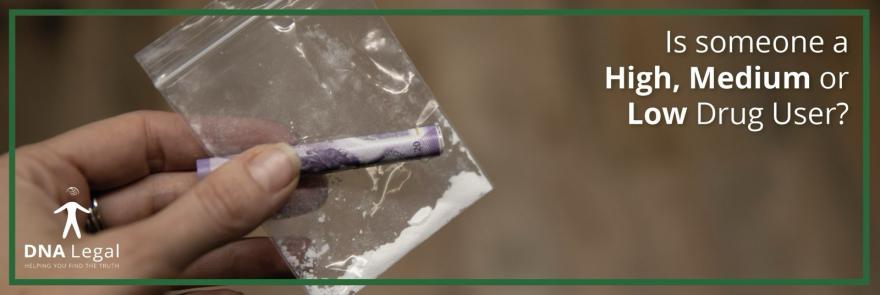A common question the team receives is if a donor is a high, medium or low user of a particular drug. This article aims to explain what these levels mean and what they don’t mean.
What are low, medium and high levels?
At DNA Legal, in line with industry-determined practice, we perform a statistical analysis of our historic data set to determine if a sample falls into the high, medium or low level category compared to all samples we test.
The use of levels in hair by sorting them into lower, middle and upper brackets has been implemented to provide context on the drug concentration in the hair, this means that our clients do not just receive a number telling them the drug concentration in the hair, but a contextual guidance on the relative concentration detected.
How are these levels established?
In this analysis, we take the data from historic hair samples and categorise them into three different brackets (high, medium, and low) based on the detected concentration in comparison to the DNA Legal database.
DNA Legal has adopted the 25%, 50% and 25% method of selecting “low”, “medium”, and “high” levels. For example, results in the lower 25th percentile of concentrations within the database will be termed as “low”. Results between the 25th and 75th percentile will be termed “medium” and results above the 75th percentile will be termed “high”.
Example
Below are some arbitrary numbers, ordered from lowest to highest.

When ordered according to value, the lowest 25% of the data represents the lowest bracket, the middle 50% of values forms the medium values and the upper 25% constitutes the high bracket. Using the above data, this would form the below brackets.

How do I use high, medium and low levels?
The following example is to aid the understanding of how the “high”, “medium” and “low” terms are placed on concentrations obtained from head hair analysis. The percentile bounds are specific and representative of each drug marker/compound and are therefore different for each drug.

If we take three example concentrations detected in hair, as shown below, you can see how each result can correlate with a level.
- Result A: 0.7ng/mg - “Low”
- Result B: 1.4ng/mg - “Medium”
- Result C: 4.3ng/mg - “High”
The most useful way to use the level is to compare the donor's result over time, ideally through a segmented hair test, to determine if the concentration and therefore levels form a decreasing, increasing or consistent pattern.
If the results go from ‘high’ to ‘low’ this may indicate a reduction in use (and potential cessation) provided other factors such as hair bleaching or chemical treatments have not been used.
Does a “high” level in the hair mean the donor is consuming a “high” amount of the drug?
A ‘high’ level in hair does not directly relate to a ‘high’ use of the drug. A ‘high’ level means that the sample tested from the donor has provided a result that falls into the ‘high’ range of all samples tested by the lab.
A direct correlation can’t be established as it is not possible take into account the following factors that affect the result;
- How pure the drug was
- What other substances the drug was cut with
- When the drug was taken and how frequently
- How often the donor washes their hair and with what products
- How the donor metabolises (breaks down) the drug in their body
- The hair colour, thickness and therefore level of melanin in the hair. (This affects how much of the drug binds to the hair and will therefore be detected.)
The levels may provide an indirect correlation; for example, from the data reviewed by DNA Legal the occasional line of cocaine per month would be highly unlikely to produce a ‘high’ level of drug detected in that period.
Can I compare levels between laboratories?
Different providers have conducted their own in-house methods to calculate levels to help estimate the relative level of drugs in the hair amongst donors they test. These procedures vary between each provider, with different parameters being implemented as deemed fit.
Therefore, in addition to the difference in analytical techniques between laboratories, the levels of “high”, “medium” and “low” should not be used when comparing drug concentrations in hair between laboratories as the data and therefore range levels will be different.
For example: comparing a result of 1.00ng/mg of a drug could fall into a “high” level from provider A, however, it could fall into a “medium” level from provider B.
Do levels change?
Yes, as part of keeping up with the current drug market and pattern of usage, DNA Legal constantly updates its database to ensure an up-to-date representation of trends in drug purity and usage.
Want to find out more?
To find out more information about drug “high”, “medium” and “low” levels and best practices to utilise them, book a DNA Legal CPD by emailing cpd@dnalegal.com .

